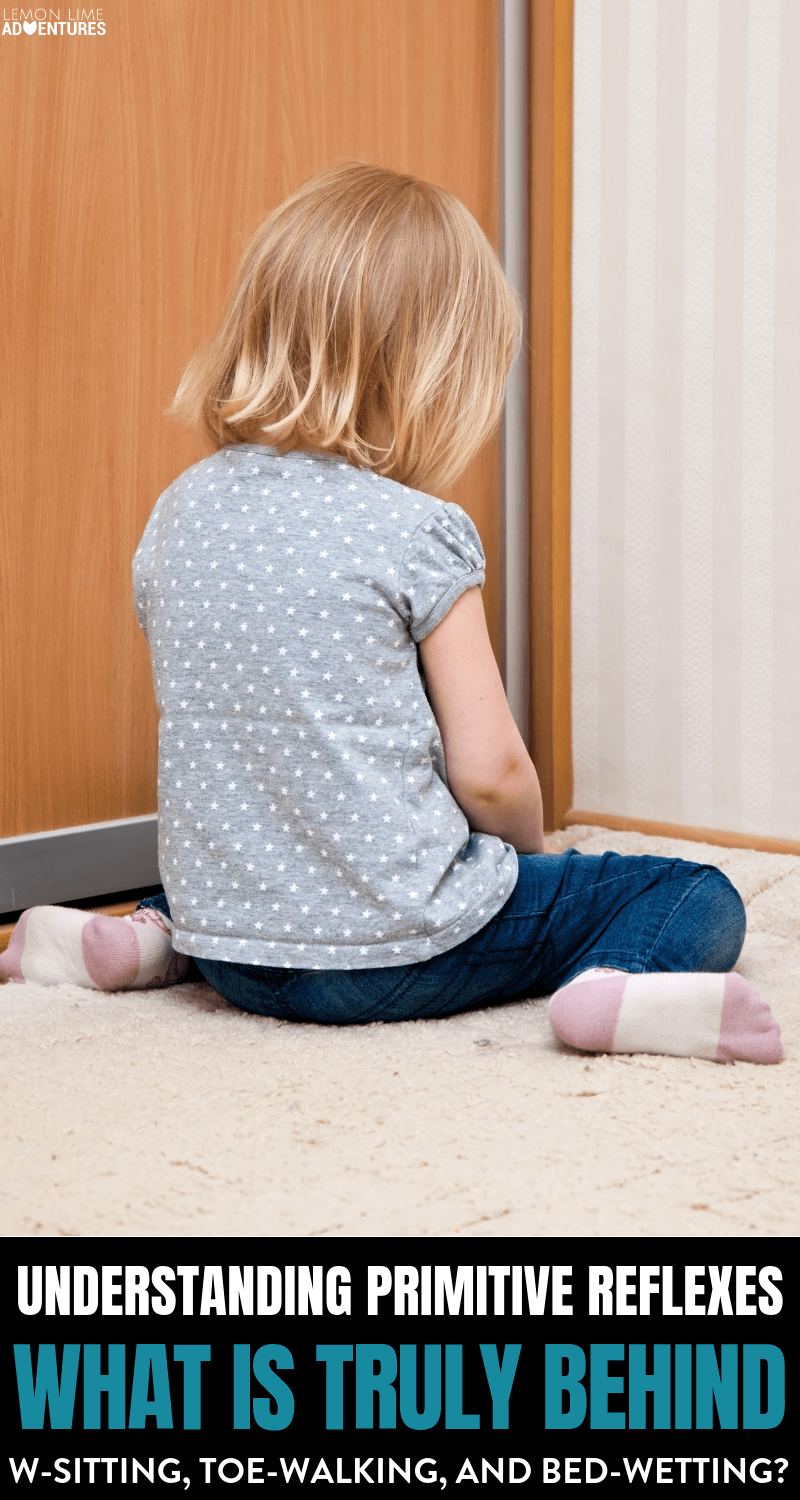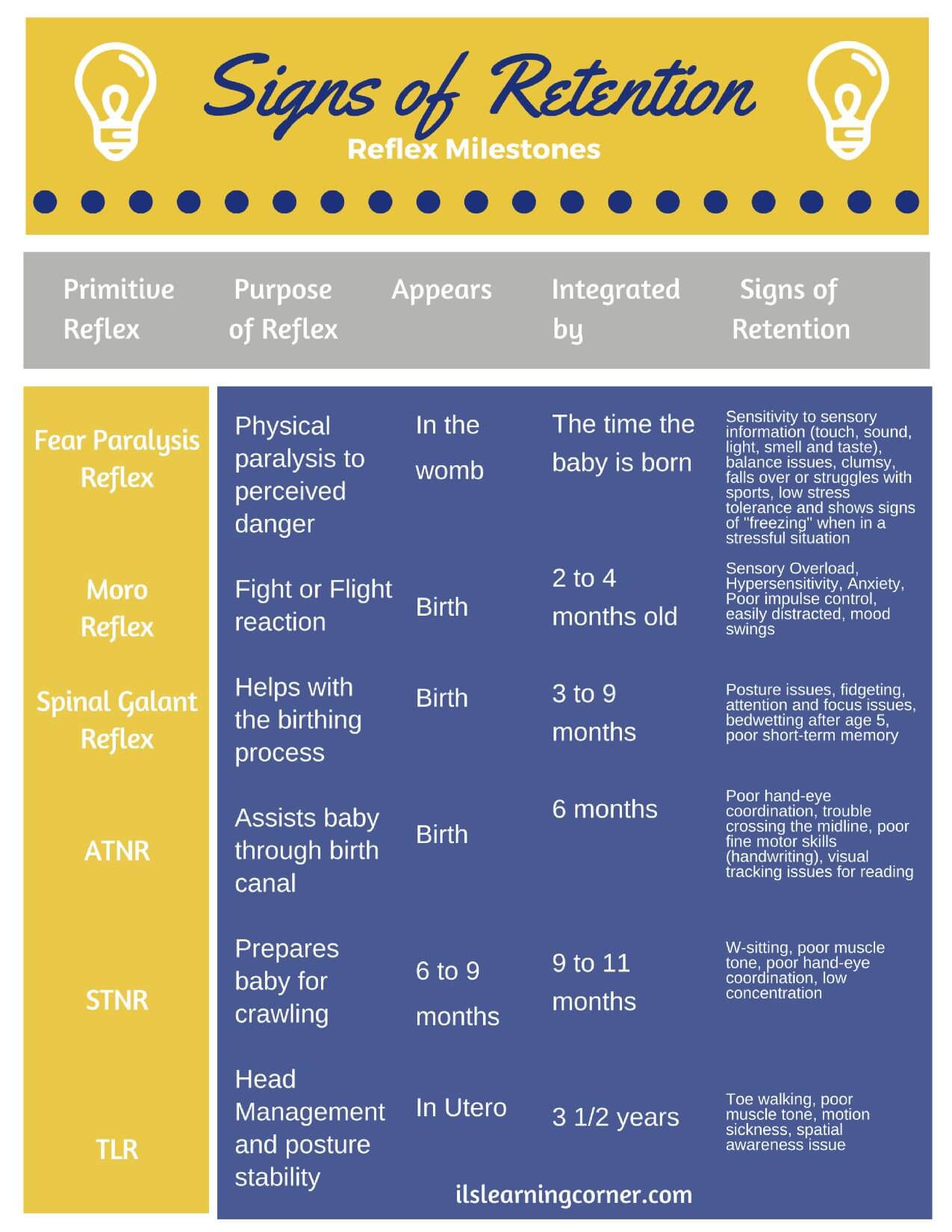(Inside: Find out the real reason your child W-sits, toe-walks, and wets the bed. The underlying cause that you’ve never even heard of…)
Does your child w-sit? Or walk on their toes?
Does your child struggle with bed wetting, or a lack of focus?
You’re not alone.
But have you ever wondered what’s really causing those behaviors?
It might be something you never expected…
So what’s the real reason your child w-sits, toe-walks, or wets the bed?

*This post may contain affiliate links. Please see disclosure for details.
What Really Causes W-Sitting, Toe-Walking, and Bed Wetting?
I am a huge fan of the iceberg theory, that all behaviors are communication for something below the surface.
And one of the major causes below the surface of behaviors like w-sitting, toe-walking, and bed wetting is something called “Primitive Reflexes”.
But really, when kids retain their primitive reflexes, they can cause a lot of different behaviors…
(Related: The Experts Reveal When to Worry About W Sitting)
What Behaviors Do You See With Primitive Reflexes?
Often you can see sensory issues where your child will struggle with loud noises, or the tags in their clothes will irritate their skin.
They might struggle to sit back in their chair or they sit on their legs on their chair. These kids tend to be moving and fidgeting a lot.
Sometimes kids will struggle with anxiety issues, hand eye coordination problems, crossing the midline, w-sitting and toe-walking.
We can also see that sometimes the muscles are just not working very well.
Sometimes their legs are doing something different than their arms. It’s almost like an imaginary force. It’s like gravity. We don’t see gravity, but we know it’s a force that plays upon us.
In school, these kids might struggle to stay focused, and they tend to be day dreamers.
(Related: Sensory Hacks to Focus a Fidgety Child (That don’t involve a fidget spinner!)
But What is a Reflex?
Everyone understands a reflex like when the doctor hits your knee and your legs just involuntarily goes right out…
You’re not under conscious control.
That would be an example of a reflex.
Now let’s say that I’m sitting here writing and all of a sudden, I hear a big boom so I jump.
That’s what we call the adult startle reflex.
Blinking your eyes is an example of a reflex. We have reflexes that we use all the time, and reflexes are important for our life.
What is a Primitive Reflex?
A primitive reflex are reflexes that sometimes they develop while the baby is still in utero.
Now all of those reflexes should be used and then lay dormant. It’s like they go to sleep, so they’re not in use anymore.
That means that they’re integrated into the higher processes of the brain.
What do I mean integrated? They’re asleep.
But if these primitive reflexes are not utilized, they don’t integrate or go to sleep.
That’s when they start interfering with the next developmental stages.
What Happens When Primitive Reflexes are Retained?
Primitive reflexes are there for the survival of the baby between the age of birth to one year of age, approximately.
When those reflexes don’t lie integrate, they are considered “retained primitive reflexes”.
One example is the Moro reflex. This is the reflex that causes babies to throw their arms back when they are startled by a loud noise.
This reflex is supposed to integrate between 2-4 months old.
Kids who retain the Moro reflex can stay stuck in anxiety mode which can start affecting their behavior.
When a child is struggling with a retained primitive reflexes, they have to compensate.
They’re impulsive sometimes. They’re in that fight or flight mode.
It requires a lot more work on their part and it gets frustrating for them because they’re wondering why they can’t perform as well as their peers.
Another example is the spinal galant reflex that deals with your spine.
These children do not like to sit back in their chair because it triggers the reflex, so they like to sit forward in their chair.
Also when they’re sleeping and they’re turning in their bed, it can trigger the reflex and cause children to wet the bed.
And those are just two primitive reflexes. You can get a free chart here with signs of retention for the different types of primitive reflexes.
Whether your child struggles with sensory overload, w-sitting, or posture issues, you can find the primitive reflex that’s lurking under the surface in this guide!
What are Some Red Flags for When We Need Help?
So we know some of the signs, what exactly are the red flags, or the signs that we need to look for more help for our kids?
Well, a child that’s about seven years old should be riding a two wheeler bike without training wheels. That could be a red flag.
There’s balance problems, or kids that can’t cross the midline.
Another red flag can be when kids struggle to copy anything from the board to their paper.
The teacher might also mention things things like a struggle with reading or struggling to stay focused.
Okay, so by now you’re likely thinking THAT’S MY KID.
I know I was when I first learned about Primitive Reflexes!
But I don’t want you to feel overwhelmed or feel like you need to stay up all night googling…
So if you’ve been reading this and you want some more information, head on over and grab this free guide to primitive reflexes from ILS Learning Corner.
They are the absolute experts when it comes to primitive reflexes, and they’ll help walk you through the different reflexes step-by-step.
Plus you can learn more in this live interview I did with Alene from ILS Learning Corner!






Wow! Just Wow! How come I’ve never heard of this as an educator? What causes these retentions?
I’m absolutely fascinated by this discussion of the various reflexes that should be integrated but are often not in our unique children! Just reached out to my favorite OT to ask her about the spinal galant reflex based upon this post. Thank you for bringing this information to the forefront of my momma mind. Grateful!